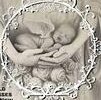
Infant clothing, or infant fashion, is clothing created for babies. It is an important form of consumer culture that encodes social and cultural characteristics, including gender, ethnicity, and social class. In many cases, the clothing is an attempt to communicate and project one’s identity. However, this practice can also be problematic. Ultimately, baby clothes and accessories are a product of culture and market forces. They also often fail to communicate the needs and feelings of infants, as they are essentially not gender-specific.
When choosing baby clothes and accessories, be aware of choking hazards. Decorations, such as small buttons or decorative rhinestones, may be choking hazards. Also, long ties may pull the clothes around the baby’s arms, legs, and neck. Make sure that all decorations are securely sewn on to avoid these hazards. For safety reasons, baby clothing and accessories should not have any buttons or decorations. However, there are still a few things to look for when selecting the right clothes for your child.
A good rule of thumb is to buy one size larger than your child will grow. However, babies grow fast, so it’s best to buy a size bigger than your child will outgrow the clothing you choose. In addition, you can always roll up the sleeves or pants to fit your child. Purchasing a size larger than your child will outgrow will also reduce the risk of tearing the fabric. It’s always a good idea to buy baby clothing that is easy to put on and take off.
When buying baby clothes, keep in mind the season and the climate. Some babies may not fit into a newborn-sized outfit, while others may grow out of three-month-old clothing after only one month. Twins, on the other hand, are smaller than singletons, so a newborn-sized outfit may last longer than one for a single baby. Some items, such as dresses, can be worn over until your baby outgrows it.
Keeping baby warm and comfortable is essential in the wintertime. Baby-wear should be comfortable and washable, as most will be dirty four times a day. If you choose a long-sleeved t-shirt, layer it with leggings or pants to keep the temperature from dropping. Footed pajamas are also a good choice as they can be worn during the day and can be removed when the baby grows out of them.
Globally, the market for baby clothing is segmented into five main regions: North America, Europe, Asia Pacific, Middle East, Africa, and Latin America. The Asia Pacific region consists of China, India, Japan, and Australia, while the Europe region covers the rest of the world. This growth is mainly driven by changing lifestyles and preferences of parents and consumers. Baby clothing manufacturers are also benefiting from the increasing popularity of designer baby clothes in retail.
